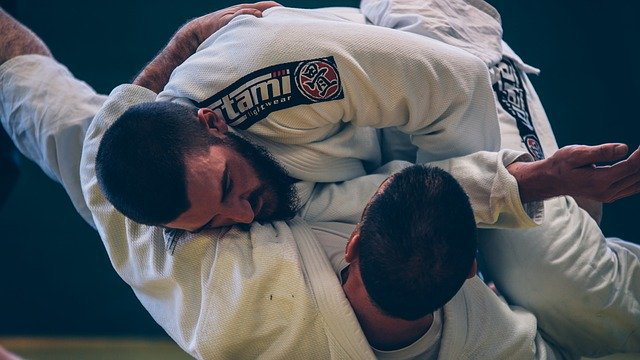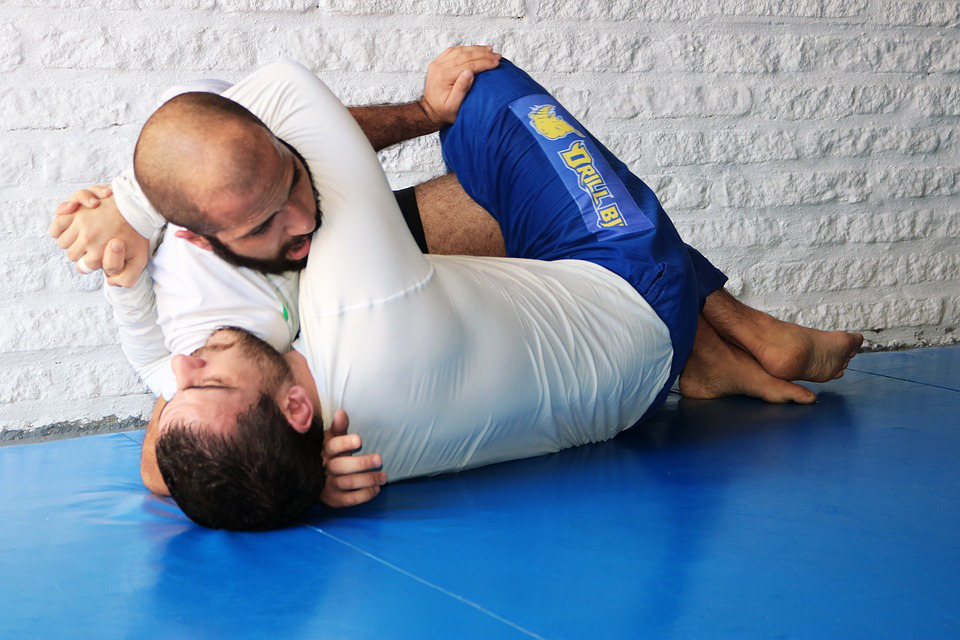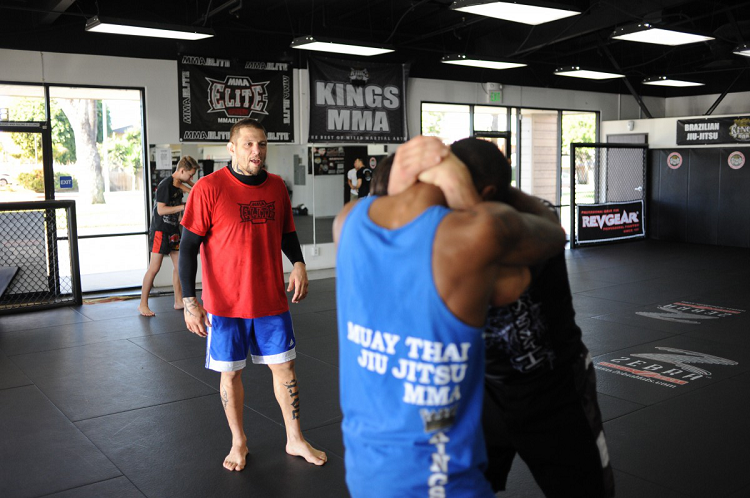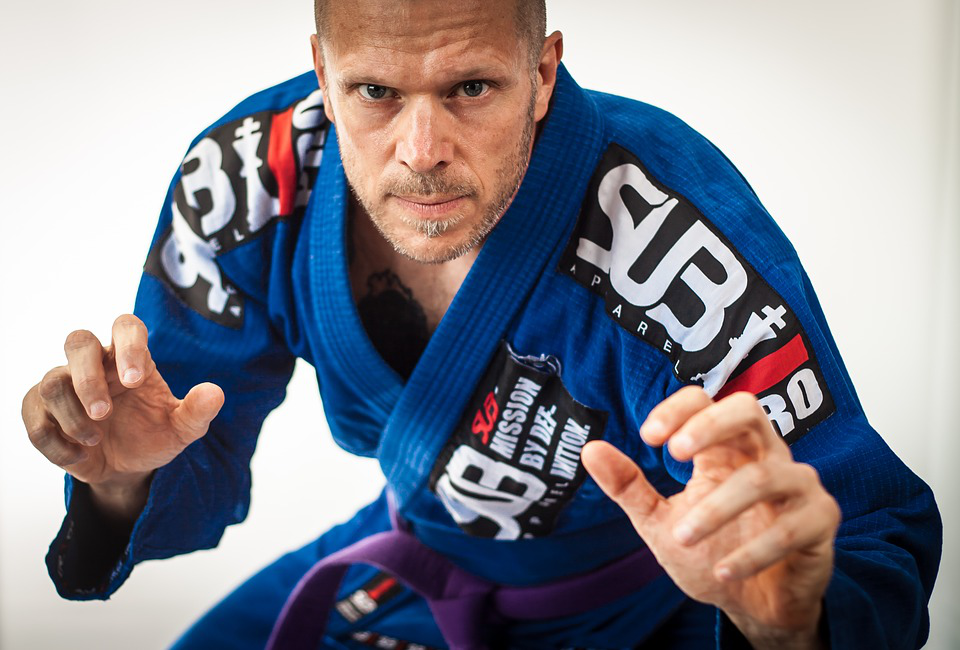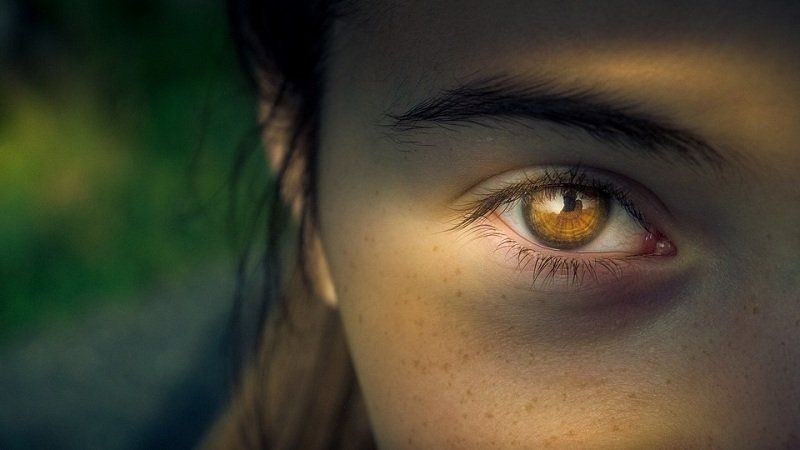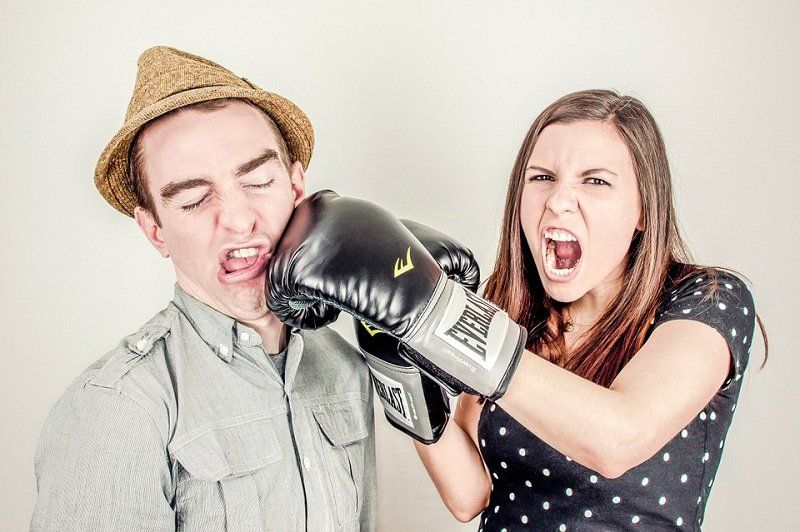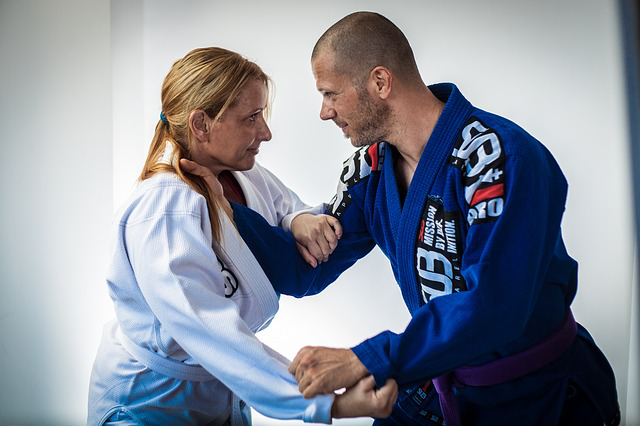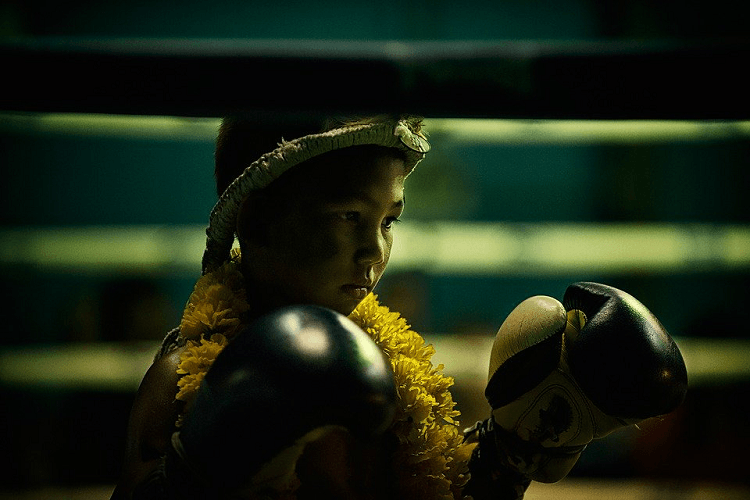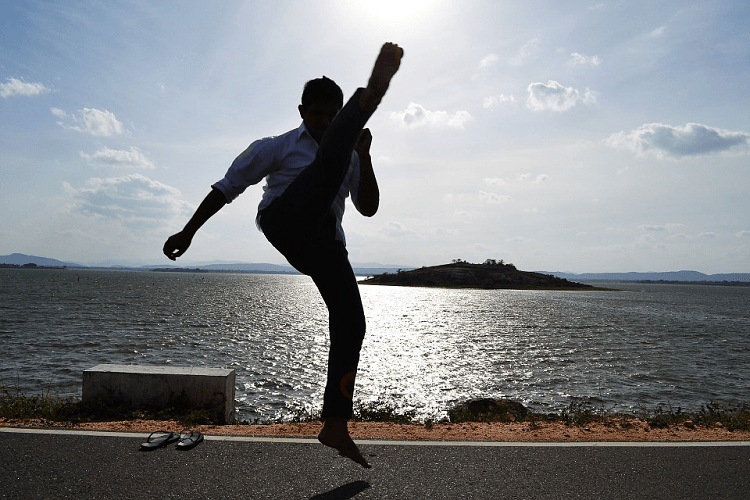BJJ (Jiu-Jitsu/Jujutsu) for Self-Defense or Competition
What is Brazilian Jiu Jitsu (Jiu Jitsu) exactly, and how does it fit into our overall expectations of a martial arts curriculum of today? First off, Jiu-Jitsu is a fascinating and dynamic martial art which is integral to a complete set of self-defense skills. It covers the missing pieces that many striking-oriented martial arts purposefully push aside. Jiu Jitsu has become a dynamic form of competition martial arts and it can also provide a more practical (and legally prudent) method of addressing certain forms of violence in self defense. However, a split currently exists in Jiu-Jitsu between self-defense oriented schools, and competition oriented schools.
Competitions require rules for safety purposes and the maintenance of civil behaviour in society as a whole. This however, is directly opposed to the brutal application of lethal force that may be necessary in various circumstances of violence, assault, or other attempts on one’s life. To eliminate applications for safety purposes is not prudent when someone is intent on caving your head in. However, in order to pass-on this combative knowledge in our modern, litigious society, there must be a relatively safe avenue to test these combative skills, where in contestants are not liable for their actions within the context of the competition. It is also necessary to overlay a basic set of rules for safety to better ensure that competitors are not unnecessarily injured.
To better understand how Jiu-Jitsu/ BJJ has evolved to what it is today as a competitive sport, let us look at its development over time.
Originally Jiu Jitsu (gentle way) was synthesized between 1460 - 1600 by combining various Japanese combative techniques that were used on the battlefield for hand to hand situations. The techniques focused on throwing/takedowns, immobilizing and controlling, chokes, and joint locks. Striking techniques were determined to be ineffective when contending with opposition wearing armor on the battlefield. The original versions of Jiu-Jitsu/Jujutsu also engaged in a plethora of weapons training such as the sword, spear and bo.
Over time jujutsu continued to evolve due to laws which were implemented with the intention of pacifying the training of martial arts and the practices and applications within. This changed the ideology to that of a weaponless warrior without armor and thus encouraged hand-to-hand combat to flourish as a form of self-defense. New applications were created to adapt to the changing situation of unarmored opponents. The development of various striking techniques in jujutsu was expanded upon. Striking targeted vital areas above the shoulders such as the eyes, throat, and back of the neck.
By the 18th century the number of striking techniques was severely reduced as they were considered less effective and caused the practitioner to exert too much energy; instead striking in jujutsu evolved to serve primarily as a way to distract the opponent or to unbalance him in order to set up a throw, joint lock, or choke.
During the same time period numerous jujutsu schools would challenge each other to matches/competitions, which became popular pastimes for warriors under peaceful unified governments. These challenges allowed warriors to test their skills without risk of breaking the law (or each other).
As Japan entered the 19th century, the Samurai warriors of Japan were disarmed and feudal law was ultimately abolished as Japan looked forward to modernization in an industrial society. Thus, the militaristic focus of hand-to-hand combat was waning, and the Japanese military began to embrace modern mechanized warfare (guns and bombs, rather than swords and fists). This left a vacuum with respect to the practice of these ancient combat arts, and the concept of preservation began to take focus. Preservation means a peaceful (and safe) practice of the ancient jujutsu arts and this increased the focus on open competition, and basic rule-sets to promote safety..
Enter Jigoro Kano, and the birth of the modern art of Judo (or more accurately, Kano’s Jiu Jitsu, as it was originally known). Kano saw a future for Jiu Jitsu as a competition art, but he also realized that the many techniques from differing schools needed to be gathered together under a single umbrella martial art in order to advance in a modern society. Kano also realized that the art needed advancement, as well as adjustments and certain rules to make competition safe for all. Kano’s many changes included removing more brutal techniques from the competition curriculum, and incorporating a belt/dan ranking system to differentiate levels of proficiency. It is this same belt ranking system that was later adopted by most martial arts during the 20th Century, including Okinawan Karate.
It was one of Kodokan Judo’s most accomplished students (and Judo competitors), Mitsuyo Maeda, that eventually took Japanese Jiu Jitsu to Brazil during the 1920s where it was taught to Carlos and Helio Gracie and later adopted as Gracie Jiu Jitsu. Helio Gracie was not a strong and robust man, so his focus in Jiu Jitsu was on the techniques that would allow a smaller, weaker opponent to overcome a larger and stronger adversary. So much of the stand-up grappling and concussive throwing techniques of Judo were pushed to the background, and the focus of BJJ became the “ground game”.
Brazilian Jiu Jitsu made its way to North America during the 1970s and began to grow in the 1980s until the production of the first UFC event in late 1993 that was co-created by Rorion Gracie, Helio Gracie’s eldest son. From the UFC debut, the rest is easy history and BJJ has climbed its way into every living room as the popularity of MMA has grown over the past 25 years. But with this evolution came an increasing difference of opinion on what should be the true focus of Jiu Jitsu.
One perspective (often associated with Carlos Gracie) is that Jiu Jitsu should focus on the competition aspects as competition is seen to forge the student, and prove capabilities through simulated combat/competition. Some schools only promote students to a higher rank, once they have won in a tournament at their existing rank - proving that they have achieved a higher skill level than their peers. An opposing perspective (often associated with Helio Gracie) is that the primary focus of Jiu Jitsu should be Self Defense, and not competition. Here, progression is often unstructured, and advancement/promotion is left to the personal judgement of the instructor.
Many camps like to divide themselves on these issues, but the fact is that both competition and self defense are critical to the practice of Jiu Jitsu. From this perspective, it is no different than any other martial art, including Karate or Kung Fu. There are benefits to be gained from both avenues of practice, and my view is that competition and self defense can go hand-in-hand in developing the student. The self defense aspects allow the instructor to teach and advance a student’s knowledge in a structured environment where performance can be objectively measured, and the rigors of practice are void of unnecessary injury. It also teaches the student to persevere in situations where the “rules” of competition do not apply (i.e., the unbridled violence of the street). Similarly, the competition aspects are critically important in teaching a student to overcome fear, and it encourages the student to push themselves past self-limiting boundaries and achieve their absolute best. This is true for any competition, whether it be martial arts, or a simple foot race or triathlon (In addition to martial arts, I competed in many such races and gained a wealth of insight from my experiences). Competition can also help to instill confidence as a student begins to achieve success at competition, and yes - it can be used to also test the student’s capabilities outside of a school/gym setting where they have left their comfort zone.
So in examining the history of Jiu Jitsu evolution, we see the clear connection between the self-defense/battlefield oriented Jujutsu-ka and the challenge or competition oriented Jujutsu-ka. The schism that we see in modern Jiu-Jitsu/BJJ evolved from these contests that were created to preserve battlefield knowledge without the intent to kill. This also aligns with my philosophy on instructing others. It takes a careful measure of both in order to effectively teach a student in Jiu Jitsu and other Martial Arts.
Self Defense is a critical aspect for any Martial Art, but competition can help to forge the student and increase their overall understanding of the art. True, many of us are not cut out to become the greatest competitors on the planet, but do not let that deter you from trying your hand at a tournament or two. Under a carefully managed tournament setting with proper rules for safety in place, the risk of serious injury is low - but the rewards can be momentous to your evolution as a student, and as a human being.
